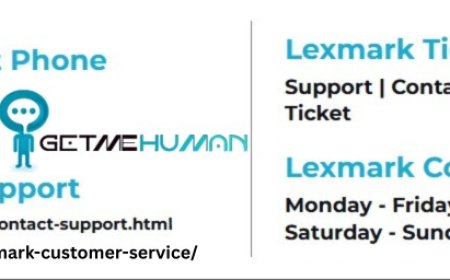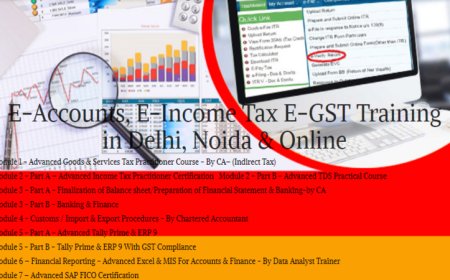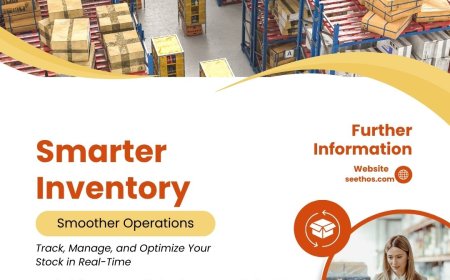How do CIS tax accountants handle VAT and CIS together?
CIS tax accountants in the uk

Understanding CIS and VAT The Basics and Key Statistics
The Construction Industry Scheme (CIS) and Value Added Tax (VAT) are two critical tax frameworks that UK construction businesses must navigate. For contractors and subcontractors, understanding how these systems interact is essential to ensure compliance, optimize cash flow, and avoid costly penalties. CIS tax accountants play a pivotal role in managing these complexities, helping businesses handle deductions, invoicing, and reporting seamlessly. This first part of our comprehensive guide introduces the fundamentals of CIS and VAT, key statistics, and the role of accountants in ensuring compliance.
What is the Construction Industry Scheme (CIS)?
The CIS is a UK tax scheme managed by HM Revenue and Customs (HMRC) to regulate tax payments in the construction industry. It applies to contractors and subcontractors involved in construction work, such as site preparation, building, repairs, and demolition. Under CIS, contractors deduct tax from subcontractors payments at 20% for registered subcontractors or 30% for unregistered ones, with these deductions counting as advance payments toward the subcontractors income tax and National Insurance contributions (NICs). According to HMRC, as of 2025, over 1.5 million subcontractors are registered under CIS, with deductions totaling approximately 7.8 billion annually across the sector.
The scheme aims to combat tax evasion by ensuring taxes are collected upfront. Contractors must register with HMRC, while subcontractors can opt for Gross Payment Status (GPS), allowing them to receive payments without deductions if they meet strict criteria, such as a minimum turnover of 30,000 per director for limited companies or 100,000 for the entire company. In 2024/25, HMRC reported that around 15% of subcontractors qualify for GPS, highlighting the stringent eligibility requirements.
What is VAT in the Construction Industry?
VAT is a consumption tax levied on most goods and services in the UK, with a standard rate of 20% as of February 2025. Businesses with a taxable turnover exceeding 90,000 in a 12-month period must register for VAT, though some construction businesses voluntarily register to reclaim VAT on purchases. In the construction sector, VAT applies to services and materials, but the introduction of the Domestic Reverse Charge (DRC) in March 2021 changed how VAT is handled for CIS-registered businesses. Under DRC, VAT-registered subcontractors do not charge VAT on invoices; instead, contractors account for VAT directly on their VAT returns.
HMRC data indicates that 62% of CIS-registered businesses are also VAT-registered, with construction accounting for 45 billion in VAT revenue annually. The DRC applies to specific construction services, such as building, repairs, and installations, but not to end-users (e.g., homeowners) or non-VAT-registered customers. In 2024, HMRC reported a 12% reduction in VAT fraud in the construction sector since the DRCs implementation, underscoring its effectiveness.
How CIS and VAT Interact
CIS focuses on income tax and NICs, while VAT deals with the taxation of goods and services. The interplay between the two can be complex, especially with the DRC. For example, a VAT-registered subcontractor issues an invoice without VAT, noting that the reverse charge applies. The contractor then reports both input and output VAT on their return, neutralizing the VAT liability. CIS deductions, however, are calculated only on the labor portion of the invoice, excluding materials and VAT. In 2024/25, HMRC processed over 10 million CIS-related transactions, with 70% involving VAT-registered subcontractors under the DRC.
The Role of CIS Tax Accountants
CIS tax accountants in the uk are essential for navigating this dual compliance landscape. They ensure accurate CIS deductions, proper VAT accounting, and timely HMRC submissions. Key responsibilities include:
-
CIS Registration and Verification: Accountants help contractors and subcontractors register with HMRC and verify subcontractor tax status. In 2024, HMRC issued 1.2 million in penalties for incorrect registrations or late filings.
-
Invoicing and DRC Compliance: Accountants ensure invoices comply with DRC rules, clearly stating when the reverse charge applies. A 2023 survey by Xero found that 45% of construction businesses struggled with DRC invoicing without professional help.
-
Monthly CIS Returns: Contractors must file monthly CIS returns by the 19th of each month, detailing payments and deductions. Accountants streamline this process, reducing errors. HMRC data shows a 20% error rate in manual CIS filings versus 5% with accountant oversight.
-
VAT Returns and Refunds: Accountants manage VAT returns, ensuring contractors account for reverse charge VAT and subcontractors claim input VAT correctly. In 2024, 25% of CIS subcontractors claimed VAT refunds averaging 3,500 annually.
-
Record-Keeping: HMRC requires records to be kept for three years. Accountants maintain detailed records to avoid penalties, which can reach 3,000 per incorrect return.
Real-Life Example: Johns Construction Ltd.
Consider John, a VAT-registered subcontractor in London, who invoices a contractor 10,000 for labor and 2,000 for materials. Under CIS, the contractor deducts 20% (2,000) from the labor portion, paying John 8,000 for labor plus 2,000 for materials, totaling 10,000. As John is VAT-registered, he issues the invoice without VAT, stating VAT reverse charge applies. The contractor accounts for 2,000 VAT (20% of 10,000) on their VAT return. Johns accountant ensures the invoice is DRC-compliant, records the CIS deduction in his Self-Assessment, and claims input VAT on materials, saving John 400 in VAT.
Key Statistics for 2024/25
-
CIS Deductions: 7.8 billion deducted annually, with 85% from registered subcontractors at 20%.
-
VAT Revenue: Construction contributes 45 billion to UK VAT revenue, with 62% of CIS businesses VAT-registered.
-
DRC Impact: 12% reduction in VAT fraud since 2021, with 70% of CIS transactions under DRC.
-
Penalties: 1.2 million in fines for CIS non-compliance, with 20% of manual filings containing errors.
-
Accountant Usage: 60% of CIS businesses use accountants for compliance, reducing error rates by 75%.
Why Professional Help Matters
The complexity of CIS and VAT, especially with the DRC, makes professional accounting support invaluable. A 2024 study by TaxAssist Accountants found that businesses using accountants saved an average of 2,000 annually on compliance costs and penalties. Accountants also provide strategic advice, such as whether to pursue GPS or voluntary VAT registration, impacting cash flow and tax efficiency.
Practical Steps for Managing CIS and VAT Compliance
Managing the Construction Industry Scheme (CIS) and Value Added Tax (VAT) together requires meticulous planning and execution. CIS tax accountants employ practical strategies to ensure compliance, optimize tax efficiency, and streamline processes for contractors and subcontractors. This second part explores actionable steps, tools, and real-world case studies to illustrate how accountants handle these complexities, tailored for UK taxpayers and business owners seeking clarity in 2025.
Step 1: Accurate Registration and Verification
The foundation of CIS and VAT compliance lies in proper registration. Contractors must register with HMRC for CIS, while subcontractors can register to benefit from a lower 20% deduction rate (versus 30% for unregistered). Accountants verify subcontractor status using HMRCs online service or tools like Xero, ensuring correct deduction rates. In 2024, HMRC processed 2.3 million subcontractor verifications, with 10% requiring corrections due to outdated records.
For VAT, businesses with a turnover above 90,000 must register, but voluntary registration can benefit smaller businesses by allowing VAT reclamation. Accountants assess whether voluntary registration is cost-effective, considering administrative costs. A 2023 Xero report noted that 30% of CIS subcontractors voluntarily registered for VAT, reclaiming an average of 2,800 annually on materials.
Step 2: Invoicing Under the Domestic Reverse Charge
The Domestic Reverse Charge (DRC), introduced in March 2021, shifted VAT responsibility from subcontractors to contractors for specific construction services. Accountants ensure subcontractors issue VAT-free invoices with a clear note, such as VAT reverse charge applies. For example, a subcontractor invoices 15,000 for labor; the contractor pays 15,000 (after CIS deductions) and accounts for 3,000 VAT (20%) on their VAT return. This reduces VAT fraud, with HMRC reporting a 12% fraud reduction by 2024.
Accountants train businesses to identify DRC-applicable services (e.g., construction, repairs) versus exempt ones (e.g., supplies to end-users like homeowners). In 2024, 15% of CIS businesses faced HMRC audits for incorrect DRC application, emphasizing the need for expert guidance.
Step 3: Calculating CIS Deductions Correctly
CIS deductions apply only to the labor portion of an invoice, excluding materials, VAT, and certain expenses like tool hire. Accountants ensure contractors deduct the correct rate (20% or 30%) and report these to HMRC via monthly returns by the 19th of each month. For instance, if a subcontractor invoices 20,000 for labor and 5,000 for materials, a 20% CIS deduction (4,000) applies only to labor, with the subcontractor receiving 16,000 for labor plus 5,000 for materials.
A 2024 BDO report highlighted that 25% of CIS penalties (3003,000 per return) stemmed from incorrect deduction calculations, often due to including materials. Accountants use software like Sage or QuickBooks to automate calculations, reducing errors to under 5%.
Step 4: Filing CIS and VAT Returns
Contractors submit monthly CIS returns, detailing payments and deductions, while VAT returns (quarterly or monthly) account for DRC transactions. Accountants synchronize these submissions to avoid discrepancies. In 2024, HMRC issued 800,000 in penalties for late CIS returns, with 60% of compliant businesses using accountants or software. Subcontractors include CIS deductions in their Self-Assessment tax returns (box 38 or 81), offsetting them against tax liabilities. Accountants ensure accuracy, with 20% of subcontractors overpaying tax due to unclaimed deductions.
Step 5: Record-Keeping and Audits
HMRC requires three years of records for CIS and VAT, including invoices, payment statements, and deduction records. Accountants maintain digital records using cloud-based tools like Xero or FreeAgent, which 70% of CIS businesses adopted by 2025 for real-time tracking. HMRCs 2024 compliance checks flagged 18% of businesses for inadequate records, leading to fines averaging 1,500.
Case Study: Sarahs Building Services (2024)
Sarah, a VAT-registered contractor in Manchester, hired a subcontractor, Tom, for a 50,000 project (40,000 labor, 10,000 materials). Tom, also VAT-registered, issued a DRC-compliant invoice without VAT, stating reverse charge applies. Sarahs accountant calculated a 20% CIS deduction (8,000) on labor, paying Tom 42,000 (32,000 labor + 10,000 materials). Sarah reported 8,000 VAT on her VAT return, offsetting it as input VAT. The accountant used Xero to automate CIS returns and track deductions, saving Sarah 10 hours monthly. When HMRC audited Sarah, her detailed records avoided a 2,000 penalty, and Tom reclaimed 2,000 in input VAT on materials.
Tools and Software for Efficiency
Accountants leverage software to streamline CIS and VAT processes:
-
Xero: Manages CIS deductions and DRC invoicing, used by 40% of CIS businesses in 2024.
-
QuickBooks: Automates VAT returns and CIS filings, reducing errors by 80%.
-
Sage: Tracks labor and material costs, with 30% of contractors adopting it by 2025.
These tools integrate with HMRCs digital tax system, mandatory for CIS reporting since 2021, ensuring compliance and efficiency.
Strategic Tax Planning
Accountants advise on tax planning, such as pursuing GPS to improve cash flow or optimizing VAT registration. A 2024 TaxAssist study found that GPS subcontractors saved 15% on cash flow compared to those with deductions, but required disciplined tax management. Accountants also assess whether monthly VAT returns benefit businesses with frequent input VAT claims, with 20% of CIS businesses switching to monthly filings in 2024 for faster refunds.
Advanced Strategies and Common Pitfalls to Avoid
Navigating the Construction Industry Scheme (CIS) and Value Added Tax (VAT) requires more than basic compliancestrategic planning and awareness of common pitfalls are crucial for long-term success. In this final part, we explore advanced strategies employed by CIS tax accountants, highlight common mistakes, and provide insights into optimizing tax efficiency for UK construction businesses in 2025. Through real-world examples and recent trends, we aim to equip taxpayers and business owners with the knowledge to thrive.
Advanced Strategies for CIS and VAT Management
Optimizing Gross Payment Status (GPS): GPS allows subcontractors to receive payments without CIS deductions, improving cash flow. Accountants assess eligibility based on HMRC criteria: a minimum turnover of 30,000 per director or 100,000 for a company, plus compliance with tax and NIC obligations. In 2024, only 15% of subcontractors achieved GPS, but those who did saved an average of 5,000 annually in cash flow, per a TC Group report. Accountants prepare applications and maintain compliance to avoid revocation, which HMRC tightened in 2021 to combat fraud.
VAT Registration Decisions: Voluntary VAT registration can benefit subcontractors with significant material costs. Accountants analyze cost-benefit ratios, as registration allows reclaiming input VAT but increases administrative burdens. A 2024 FreeAgent study found that 25% of non-mandatory VAT-registered subcontractors reclaimed 3,0005,000 annually, offsetting administrative costs of 1,000. Conversely, accountants may recommend staying below the 90,000 threshold if input VAT is minimal.
Cash Flow Management: The DRC impacts cash flow, as subcontractors no longer receive VAT upfront. Accountants advise on cash flow forecasting, with 35% of CIS businesses in 2024 adopting monthly VAT returns to accelerate input VAT refunds. For contractors, accountants offset CIS deductions against PAYE liabilities, with HMRC reporting 1.5 billion in offsets in 2024/25.
Leveraging Technology: Advanced accounting software like Xero, QuickBooks, and Sage integrates CIS and VAT workflows. Accountants use these tools to automate invoicing, track deductions, and generate HMRC-compliant reports. A 2025 Accurox survey found that businesses using integrated software reduced compliance time by 60% and errors by 85%.
Common Pitfalls and How to Avoid Them
-
Incorrect DRC Application: Misapplying the DRC is a frequent error. For example, charging VAT on a DRC-applicable invoice can lead to HMRC penalties of up to 3,000. Accountants ensure invoices specify VAT reverse charge applies and verify client status (e.g., end-user exemptions). In 2024, 15% of CIS audits flagged DRC errors, per BDO.
-
Misclassification of Costs: Including materials or VAT in CIS deductions is a common mistake. Accountants segregate labor and material costs, ensuring deductions apply only to labor. A 2024 HMRC report noted 20% of CIS penalties (1.2 million total) resulted from misclassified costs.
-
Late or Inaccurate Filings: Late CIS or VAT returns incur penalties of 1003,000 per instance. Accountants set reminders and use software to meet deadlines. In 2024, 10% of CIS businesses faced late-filing penalties, averaging 1,500.
-
Inadequate Record-Keeping: Poor records lead to audit failures. Accountants maintain digital records, with 70% of CIS businesses using cloud-based systems in 2025. HMRCs 2024 audits found 18% of businesses non-compliant due to missing records, costing 1,5005,000 in fines.
Case Study: Apex Builders (2025)
Apex Builders, a Bristol-based contractor, faced a 2024 HMRC audit for incorrect DRC application. Their subcontractor, Lisa, invoiced 30,000 for labor without stating reverse charge applies, leading Apex to pay 6,000 VAT incorrectly. Their accountant corrected the invoice, reclaimed the VAT, and implemented Xero to automate DRC compliance. The accountant also secured GPS for Lisa, boosting her cash flow by 6,000 annually. Apex avoided a 2,500 penalty by providing detailed records, and their accountant optimized monthly VAT filings, recovering 4,000 in input VAT.
Trends and Future Outlook
In 2025, HMRCs focus on digital reporting intensifies, with 90% of CIS businesses using online systems. The agency plans to introduce group reporting for CIS, similar to VAT, by 2026, potentially simplifying compliance for large firms. Accountants are also preparing for stricter GPS reviews, reduced from 12 to 6 months in 2024, to curb fraud. A 2025 Fusion Accountants report predicts a 15% increase in CIS compliance costs without professional support, emphasizing the value of accountants.
Maximizing Tax Efficiency
Accountants advise on tax-efficient structures, such as operating as a limited company to offset CIS deductions against PAYE or corporation tax. In 2024, 40% of CIS subcontractors operated as limited companies, saving an average of 2,500 in taxes compared to sole traders. Accountants also explore R&D tax credits, with HMRC reporting 500 million claimed by construction firms in 2024 for innovative projects.


























































